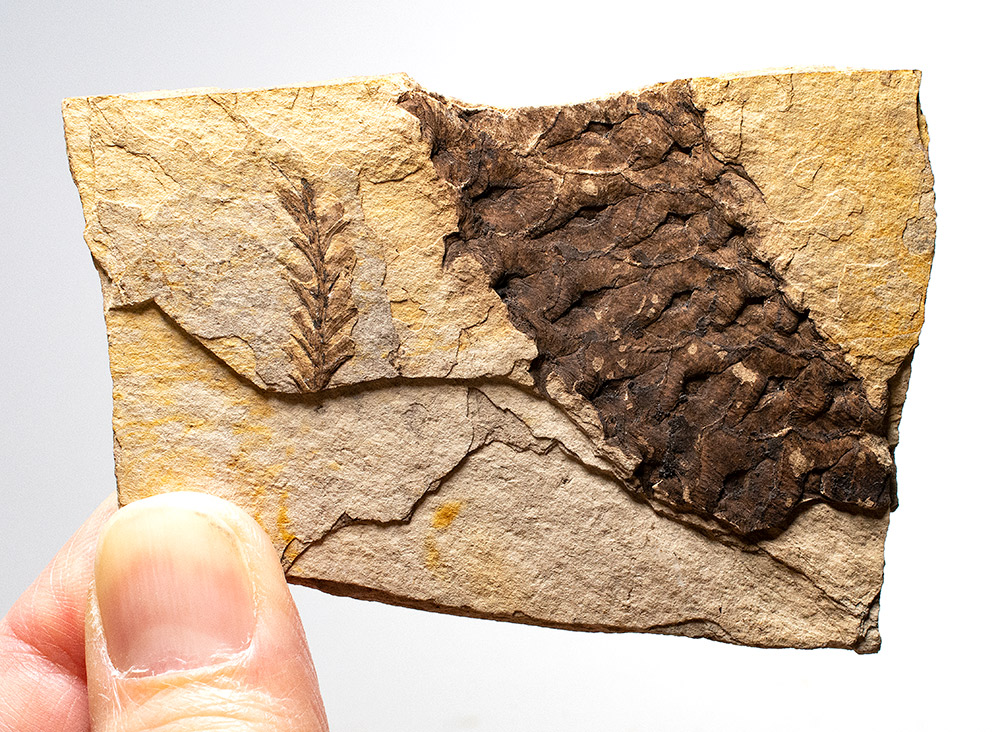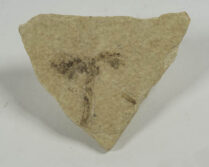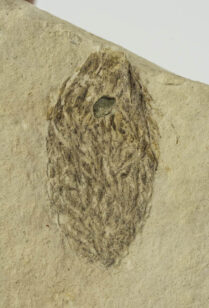Description
Eocene
Driftwood Creek Beds, Ootsa Lake Group
Smithers, British Columbia, Canada
3 inch slab with 0.8 inch leaf and 2.2 inch partial large cone.
Cone,
Here’s an interesting association piece for the plant collector – two different conifers on the same piece of matrix.
Metasequoia is a genus of conifer that appeared during the early part of the Late Cretaceous (Cenomanian age). It survived the K/T extinction and thrived in North America during the Paleocene and Eocene. It ranged as far north as Ellesmere Island, indicating a wet, mild climate even in northernmost Canada at the time. However, climates began trending drier, and cooler by the Late Eocene.
Metasequoia died out in North America by the end of the Miocene and was considered extinct worldwide until it was discovered alive in China in the 1940’s. Since then, it has been successfully re-introduced into North America.
M. occidentalis has been considered indistinguishable from the modern dawn redwood, M. glyptostroboides by some paleobotanists.





